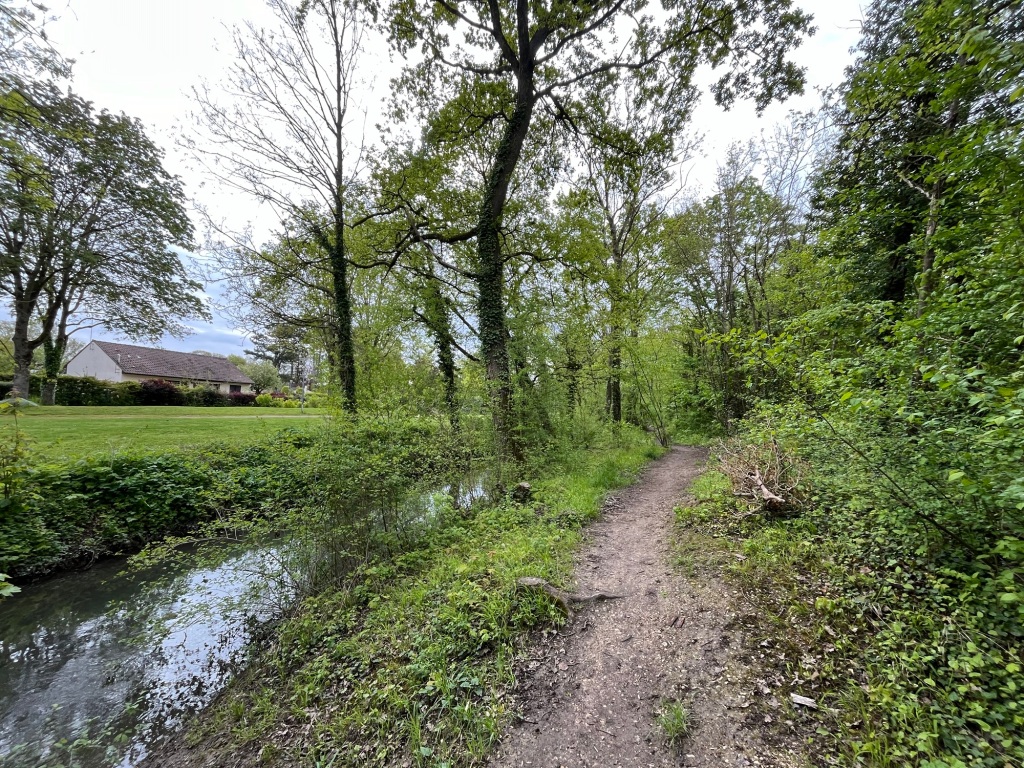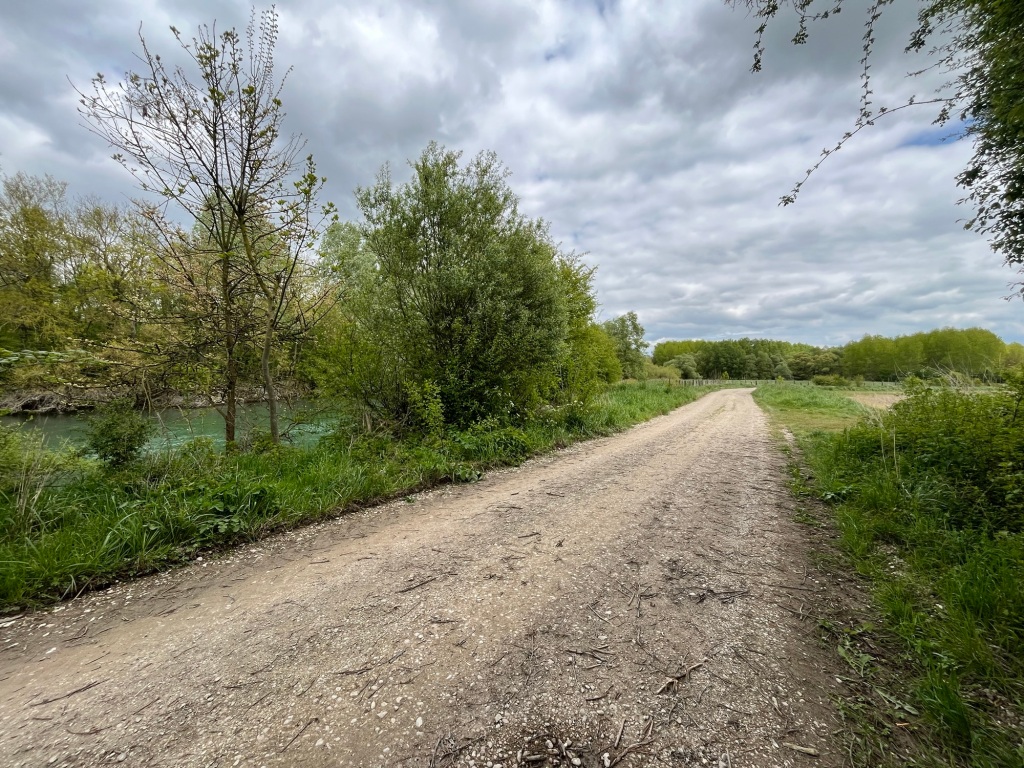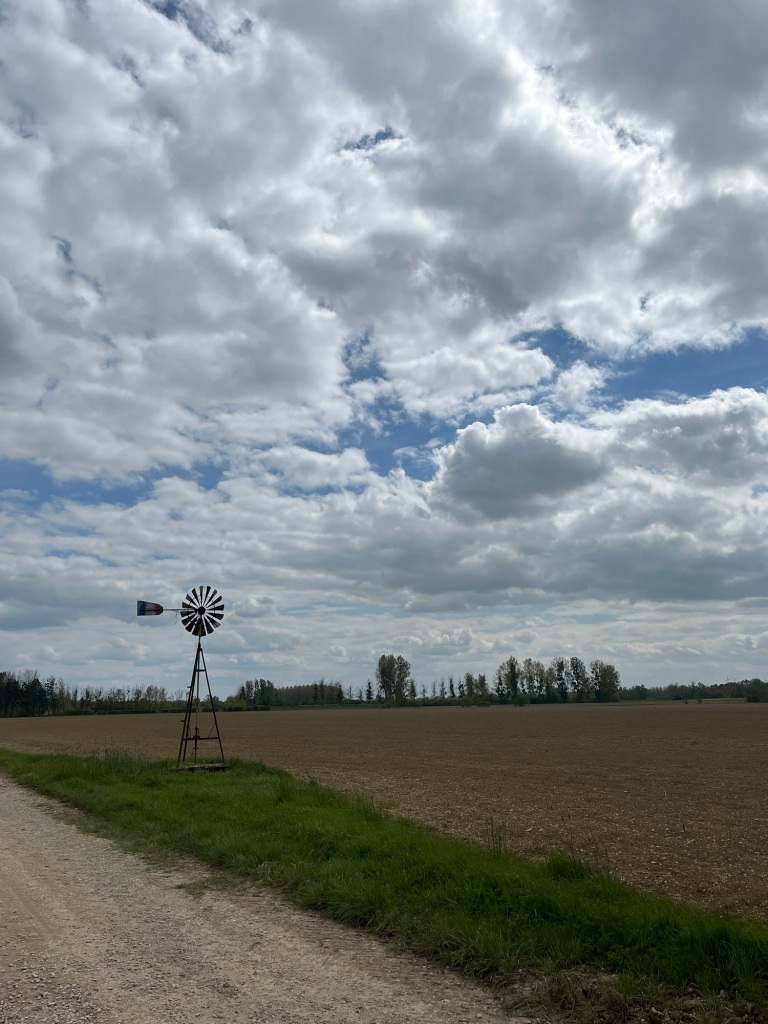Châlons was, in Roman times, known as Catalaunum, and was founded on the junction of the Roman Via Agrippa and the River Marne. A number of canals traverse the town, although most now run under elegant wide streets in the town centre.
I was staying about 1.5km off the Via Francigena in the St Jean district, and was at my own cross roads. The pilgrim here has the option of following the Marne valley – on the official route – or following the Coole valley, due south. This latter route follows Archbishop Sigeric’s route from the 900s, and is 37 km shorter than the modern route, which equates to lopping two days off the schedule. It had been my intention to take this route, but accommodation had already proved problematic and the challenge with the “Coole” route is that there are very few facilities.
In truth, I had decided to follow the modern route a few days ago – there was more to see, and more options of places to stay. And in conversation with a number of Swiss pilgrims, it would seem unlikely that the St Bernard Pass will be open when I am due to arrive, so the imperative to get there has waned. I think I am enjoying the journey, and am happy to go with the flow of things more.

I thought all this while I drank my coffee at the Ariel Bar on the Avenue Jacques Simon. By accident I have made up for starting a day late on my original planned itinerary, and by going on the modern route via Vitry-le-François, I will probably fall a day behind again; but what does it matter?
I observed my fellow coffee drinkers: retired men, chatting conspiratorially in corners. I wonder what their concerns were? I would never know… though I think one of them was talking in hushed tones about his neighbours onions.
I drank up, paid up, and headed out my way. A diagonal slice of walking across the suburbs would bring me onto the northern bank of the Canal Latéral à la Marne, on a section of land between the canal and the small river Moivre. The cycleway, which incidentally forms part of an international cycle route from Paris to Prague, runs on the southern bank, so for the first four kilometres until the village of Sarry, I walked along a gentle wooded path. I have become quite an expert in walking surfaces, and dry leaf mould has got to be the best surface on which to tread the way, with perhaps the exception of turf maintained by the Commonwealth War Graves Commission.

Today I was looking at a 24km (15 mile) walk. This the perfect sort of distance. Physically it is completely manageable, and in terms of time it means without rising with the sparrow, one can still be at the destination in time to do the daily washing and other admin.
Beyond Sarry, I crossed the canal and resumed the walk on the cycle path (smooth concrete in some stretches and tarmac in others: not such a good walking surface!). I was passed by a pleasure cruiser and elicited a cheery wave. A little further ahead they came to a lock and I sat on a bench to watch the mechanics of French lock operation in detail.

Now I mention this, because yesterday’s post about automated French eclusier caused a flurry of excitement and comparison with the manual operation of British locks. So I hope you’re sitting comfortably and not operating any heavy machinery, because I am about to explain in some detail how traverse a French lock.
Firstly, you pull the handle on approach (we dealt with this yesterday). At which point the triangular warning light system springs into life. Up until now, I have only seen a single red light in the bottom left hand corner of the signal. So imagine my excitement, when, on operating the handle, a green light came on in the bottom right hand corner of the signal. I took this to mean “we have received your request: proceed to the lock.” I imagine that in the exceedingly unlikely event that a boat had approached the lock in the opposite direction and had pulled the lever first, another light might appear… or no light at all. I mean, one can only be lost in the possibilities here. I’ve no idea the state of excitement tow path users would be in if two boats passed in opposite directions at the same time. Wow!
Anyway, I digress. So as the boat approaches the lock, the water begins to drain (or fill) in the lock to allow passage through the gates. at this point an amber flashing light appears above the red light in the bottom left hand corner. The skipper waits with eager longing at the lock gates. Once the levels have equalised, the gates open and a green light appears in the top left corner of the sign, and the boat glides into the lock, bells ring, and the gates close behind it.
I do hope this is not too much for you, dear reader. I’m happy to say I was sitting down while watching all this, otherwise I may not have been able to contain myself. The boat then rises (or falls) and the opposing gates open, and away the boat goes, until the excitement of the next lock.

It was sometime later that I bumped into Anne-Laura and Pierre again. This was the Swiss couple I had met at Condé. They too had stayed overnight in Châlons and were spending the day travelling from one bar to another to try to stay warm. We compared boat stories… this took some time (they hadn’t witnessed a lock in operation!).
We walked together for a while, talking about pilgrim things (routes, accommodation, food) and then they ducked into Pogny. They can be seen disappearing in the distance of the above photo.
I decided that I really had had enough of canals… they were perhaps driving me a little potty. At Pogny, the official route heads a little way down the road towards Vitry-la-Ville, and then picks up the snaking route of the river Marne. I was temporarily mesmerised by the sight of flowing water after the languid water of the part few days.

It was great to walk beside fields again, and watch several tractors rolling freshly ploughed soil. An old wind pump blew in the wind; someone had painted its sails red, white and blue. It was no longer connected to the pump mechanism, but the gentle breeze caught its colours. I miss these little wind pumps at home, so many I remember as a child having fallen into disrepair and neglect.

I was not far from my destination now, a left hand turn in along the road over the river and canal and I was in La Chaussée. I was so stay at the Logis Clos de Mutigny Hotel; an expensive choice, but the only available in the area.
As I rounded the last bend, I heard children’s voices and saw, what I took to be two families of children on bikes cycling up and down the road. There seemed to be a pair of each age, and a couple of six year old girls approached me on their bikes. The one with brown hair was a little braver and asked me what my name was. This was an easy question – I know both my name, and how to say it in French. They cycled off, seemingly satisfied.
A minute or so later, I heard them approach again. Another question. I understood it as “what are you?”, or perhaps “who are you?” I replied that I was a pilgrim from England. This led to some confused looks and they cycled off again. I could hear them relaying what the strange man had said to them to their older compadres.
A third time they cycled back. My friend now asked me why I was carrying “those sticks.” This is not the first time young people have asked me these questions. I wracked my brain to try and say “to help me walk.” Helpfully, my wife Rosie explained in a phone call later what I should have said. Instead, what I think I said was “Help me!” And pointed to my knees.
The look of utter confusion, turned quickly to pity, and the pair cycled off. No doubt they informed their siblings all about the poor fool they had met. Chuckling to himself, that poor fool walked the last few steps to his hotel, happy that he had chosen this route.

Leave a comment